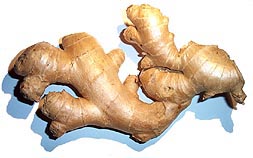Storage organ
Storage organs are specialized structures in plants and some animals that are used to store nutrients, water, or energy. These organs play a critical role in the survival of the organism, especially during periods of scarcity or adverse environmental conditions. In plants, storage organs are often modified roots, stems, or leaves that have evolved to accumulate and preserve substances like starch, fats, or water. In animals, storage organs may include structures like adipose tissue or the liver, which store fat and glycogen, respectively.
Types of Storage Organs in Plants[edit | edit source]
Plants have developed a variety of storage organs to cope with different environmental challenges. These include:
Bulbs[edit | edit source]
A bulb is a type of underground storage organ that is used by many plants, such as onions, garlic, and tulips. Bulbs consist of a short stem surrounded by fleshy scales (modified leaves) that contain nutrients to support the plant's growth and development during unfavorable conditions.
Tubers[edit | edit source]
Tubers are enlarged structures in some plant species, such as potatoes and yams, that are primarily used to store starch. Tubers are usually formed at the end of underground stems known as stolons. The eyes of a potato are actually buds that can sprout into new plants.
Rhizomes[edit | edit source]
Rhizomes are modified stems that grow horizontally underground and are used as storage organs by plants like ginger, turmeric, and bamboo. Rhizomes store starches and proteins and can give rise to new shoots, enabling the plant to spread and reproduce vegetatively.
Corms[edit | edit source]
A corm is a short, vertical, swollen underground plant stem that serves as a storage organ. Corms contain stored food that helps plants like crocuses and gladioli survive adverse weather conditions and regrow after dormancy.
Roots[edit | edit source]
Some plants have modified roots that act as storage organs, such as carrots, sweet potatoes, and beets. These modified roots store nutrients and water, helping the plant survive through droughts and providing energy for growth in the next growing season.
Storage Organs in Animals[edit | edit source]
In animals, storage organs serve various functions, including energy storage, water conservation, and nutrient accumulation. Some examples include:
Adipose Tissue[edit | edit source]
Adipose tissue is a type of connective tissue that stores energy in the form of fat. It also provides insulation and protection to the body's organs. Adipose tissue is found in many animals, including humans.
Liver[edit | edit source]
The liver is a vital organ in many animals, including humans, that serves multiple functions, including the storage of glycogen. Glycogen is a polysaccharide that can be quickly converted to glucose to meet the body's energy needs.
Camel Humps[edit | edit source]
Camel humps are a unique adaptation that allows these animals to store fat, which can be metabolized into water and energy when food and water are scarce. This adaptation is crucial for survival in desert environments.
Importance of Storage Organs[edit | edit source]
Storage organs are essential for the survival of plants and animals. They allow organisms to endure periods of food scarcity, drought, or other environmental challenges. In agriculture, many storage organs, such as potatoes and carrots, are important food sources for humans. Understanding the function and management of storage organs is crucial in plant breeding, conservation, and agriculture.
Search WikiMD
Ad.Tired of being Overweight? Try W8MD's physician weight loss program.
Semaglutide (Ozempic / Wegovy and Tirzepatide (Mounjaro / Zepbound) available.
Advertise on WikiMD
|
WikiMD's Wellness Encyclopedia |
| Let Food Be Thy Medicine Medicine Thy Food - Hippocrates |
Translate this page: - East Asian
中文,
日本,
한국어,
South Asian
हिन्दी,
தமிழ்,
తెలుగు,
Urdu,
ಕನ್ನಡ,
Southeast Asian
Indonesian,
Vietnamese,
Thai,
မြန်မာဘာသာ,
বাংলা
European
español,
Deutsch,
français,
Greek,
português do Brasil,
polski,
română,
русский,
Nederlands,
norsk,
svenska,
suomi,
Italian
Middle Eastern & African
عربى,
Turkish,
Persian,
Hebrew,
Afrikaans,
isiZulu,
Kiswahili,
Other
Bulgarian,
Hungarian,
Czech,
Swedish,
മലയാളം,
मराठी,
ਪੰਜਾਬੀ,
ગુજરાતી,
Portuguese,
Ukrainian
Medical Disclaimer: WikiMD is not a substitute for professional medical advice. The information on WikiMD is provided as an information resource only, may be incorrect, outdated or misleading, and is not to be used or relied on for any diagnostic or treatment purposes. Please consult your health care provider before making any healthcare decisions or for guidance about a specific medical condition. WikiMD expressly disclaims responsibility, and shall have no liability, for any damages, loss, injury, or liability whatsoever suffered as a result of your reliance on the information contained in this site. By visiting this site you agree to the foregoing terms and conditions, which may from time to time be changed or supplemented by WikiMD. If you do not agree to the foregoing terms and conditions, you should not enter or use this site. See full disclaimer.
Credits:Most images are courtesy of Wikimedia commons, and templates, categories Wikipedia, licensed under CC BY SA or similar.
Contributors: Prab R. Tumpati, MD



